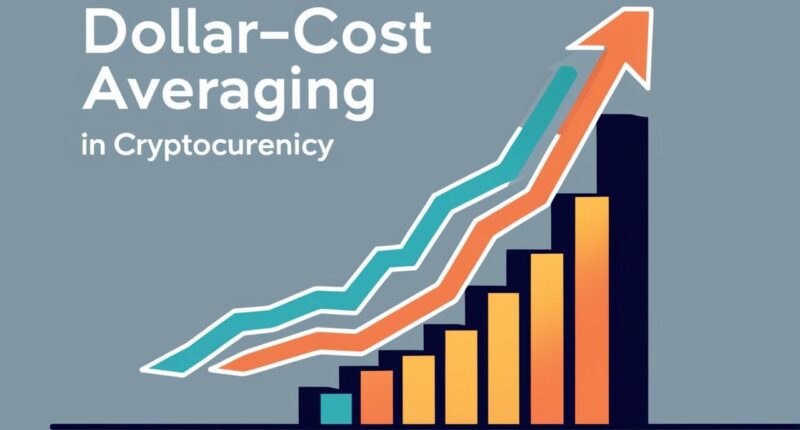Dollar cross averaging, or dollar-cost averaging (DCA), is a strategy used in cryptocurrency trading. It involves buying a fixed dollar amount of a cryptocurrency at regular intervals, such as weekly or monthly. This approach helps reduce the impact of price fluctuations and minimizes emotional decision-making during market volatility. Investors can select popular cryptocurrencies and set up automated purchases through exchanges. Understanding DCA can aid in building a consistent investment portfolio over time, offering a structured method to participate in the market.
As individuals seek to navigate the often volatile world of cryptocurrency trading, one investment strategy that has gained popularity is dollar cross averaging. This approach, also known as dollar-cost averaging (DCA), involves purchasing a fixed dollar amount of a chosen cryptocurrency at regular intervals. By doing so, investors aim to reduce the impact of price fluctuations on their overall investment. This strategy can be applied regardless of the asset’s price changes, providing a structured method for acquiring cryptocurrencies.
Dollar cross averaging offers a structured approach to cryptocurrency investing, helping to mitigate the effects of market volatility.
Key components of dollar cross averaging include determining a fixed investment amount, such as $100, and establishing a regular buying schedule, which can be daily, weekly, or monthly. Investors typically select popular cryptocurrencies like Bitcoin or Ethereum and consider a long-term investment horizon. Many exchanges offer automated buying processes, making it easier to stick to the planned schedule. Dollar-cost averaging (DCA) can be particularly advantageous for investors, as it aligns with the principles of crypto staking, which emphasizes consistent participation in the market. Additionally, DCA reduces risk by spreading out purchases and avoiding emotional decisions.
One of the notable benefits of dollar cross averaging is its ability to mitigate the risks associated with poorly timed lump-sum investments. This strategy helps reduce emotional decision-making, especially during volatile market conditions. Over time, dollar cross averaging can potentially lower the average cost per coin, making it an appealing option for beginners. It also simplifies the investment process, providing a disciplined method to build a cryptocurrency portfolio.
However, dollar cross averaging does have drawbacks. It may result in lower returns during bull markets, where prices are steadily increasing. Additionally, it does not protect against prolonged market downturns, and frequent small purchases can lead to higher transaction fees. Investors must also verify they have a consistent cash flow to maintain regular investments.
To implement dollar cross averaging successfully, individuals should choose a reputable cryptocurrency exchange, set up recurring buy orders, and regularly monitor their strategy. This method contrasts with lump-sum investing, which assumes one ideal entry point.
Frequently Asked Questions
How Does Dollar Cross Averaging Differ From Traditional Dollar-Cost Averaging?
Dollar cross averaging differs from traditional dollar-cost averaging primarily in frequency and market volatility.
In cryptocurrency, investments are often made more frequently—daily or weekly—compared to monthly or quarterly in traditional methods. This higher frequency helps manage the increased volatility in crypto markets, capturing various price points.
Additionally, crypto allows for smaller investment amounts, accommodating a broader range of investors, while traditional methods generally require larger capital commitments and maintain a long-term focus.
Can Dollar Cross Averaging Be Applied to Stocks or Other Assets?
Dollar cross averaging can indeed be applied to stocks and various other assets. This strategy involves investing fixed amounts regularly, regardless of market conditions.
In stocks, it reduces the impact of market volatility, while in bonds, it helps average interest rate fluctuations.
Real estate investors can use it for REITs, and commodity traders can apply it to gold or oil.
What Are the Risks Associated With Dollar Cross Averaging in Crypto?
Dollar cross averaging in cryptocurrency carries several risks.
Market volatility can lead to significant price fluctuations, impacting returns. Timing risk arises as this strategy may miss opportunities for larger gains from lump-sum investing.
Additionally, fees from frequent trades can accumulate, eroding profits. Regulatory changes and security vulnerabilities pose further threats, as exchanges may be hacked, and the complexity of tax implications can add to the challenges of frequent trading in the crypto market.
Is Dollar Cross Averaging Suitable for Short-Term Trading Strategies?
Dollar cross averaging is generally not suitable for short-term trading strategies.
It focuses on long-term investment, helping to reduce the impact of short-term market volatility.
Short-term traders may find it limits their ability to capitalize on quick price movements and can lead to higher transaction fees.
Additionally, the averaging effect takes time to develop, making it less beneficial for those seeking immediate returns or reacting swiftly to market changes.
How Do Transaction Fees Impact Dollar Cross Averaging Effectiveness?
Transaction fees greatly impact the effectiveness of investment strategies like dollar cost averaging (DCA). Higher fees reduce net profits, especially when trades are frequent.
Percentage-based fees can heavily affect smaller transactions, while flat fees disproportionately burden low-value trades.
To minimize these costs, investors might consider trading less frequently, using exchanges with lower fee structures, or batching trades.
Understanding and managing these fees is essential for maximizing potential returns over time.
References
- https://appreciatewealth.com/blog/dollar-cost-averaging
- https://www.bitpay.com/blog/dollar-cost-averaging-crypto
- https://www.finra.org/investors/insights/dollar-cost-averaging
- https://paxful.com/university/en/dollar-cost-averaging-crypto
- https://www.fidelity.com/learning-center/trading-investing/crypto/dollar-cost-averaging
- https://www.experian.com/blogs/ask-experian/pros-cons-of-dollar-cost-averaging/
- https://www.calibraint.com/blog/dollar-cost-averaging-crypto-explained
- https://www.fidelity.com/bin-public/060_www_fidelity_com/documents/learning-center/dollar-cost-averaging-print.pdf
- https://www.investopedia.com/articles/forex/052815/pros-cons-dollar-cost-averaging.asp
- https://github.com/bhargavvader/personal/blob/master/notebooks/text_analysis_tutorial/topic_modelling.ipynb









